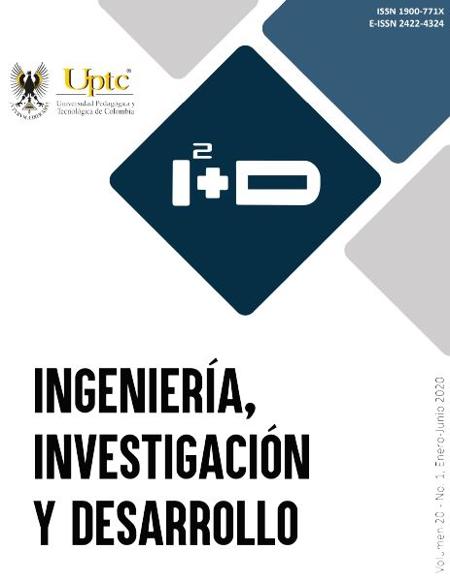Mol2all-videogame for the stoichiometry learning: identification of the charateristics game and player’s profile

Abstract
For a large part of high school students learning stoichiometry is complex because they have deficiencies in mathematical logic and handling of proportions. This situation demotivates the student during their learning process, which exacerbates the problem of understanding this topic. This study proposes an investigation that will result in the implementation of a serious video game which motivates the learning of stoichiometric calculations. The scope of this article is the presentation of the study carried out to determine the profiles of the students in the role of players, and the characteristics of the video game that will be called Mol2All should have. In order to achieve it, this study used quantitative research, with a synthetic approach and a quasi-experimental design. It concluded that the profile of the student as a player is in accordance with Richard Bartle’s methodology, in addition, the study shows that the population that will benefit from the video game is wide, regardless of their socioeconomic status, their area of residence, gender or whether the educational institution is public or private. It was also determined that is important to use lightweight technologies adaptable to all types of electronic devices to be used in the construction of Mol2All.
Keywords
serious videogame, stoichiometry, chemistry teaching, stoichiometry learning
References
- S. M. Obando, Implementación de estrategias didácticas para la enseñanza de la estequiometría en estudiantes del grado once de enseñanza media, Medellín: Repositorio Universidad Nacional, 2013.
- «Estequiometría y ley de conservación de la masa: lo que puede ocultar la simplificación del discurso experto,» Ciênc. Educ., Bauru, vol. 21, nº 2, pp. 351-360, 2015. DOI: https://doi.org/10.1590/1516-731320150020006
- C. D. Bridges, Experiences Teaching Stoichiometry to Students in Grades 10 and 11, Washington D.C.: Walden Dissertations and Doctoral Studies Collection, 2015, p. 145.
- M. S. Martínez y A. L. De Longhi, «Identificación y categorización de dificultades de lectocomprensión en enunciados de lápiz y papel de estequiometría,» Revista Eureka de Enseñanza y divulgación de las ciencias, vol. 10, nº 2, pp. 159-170, 2013. DOI: https://doi.org/10.25267/Rev_Eureka_ensen_divulg_cienc.2013.v10.i2.02
- G. E. Hurtado, «Las estrategias didácticas activas en el aprendizaje de la resolución de problemas de química, influencia del estilo cognitivo del estudiante,» Tecné, Episteme y Didaxis: TED, vol. 39, nº 1, pp. 31-51, 2016.
- M. O. Castelán y G. Hernández, Estrategia didáctica para apoyar la comprensión de la estequiometría a partir del uso de analogías, Veracruz: X Congreso nacional de investigación educativa COMIE, 2009.
- A. Raviolo y G. Lerzo, «Enseñanza de la estequiometría: uso de analogías y comprensión conceptual,» Educación Química, vol. 27, nº 1, pp. 195-204, 2016. DOI: https://doi.org/10.1016/j.eq.2016.04.003
- A. Raviolo y G. Lerzo, «Analogías en la enseñanza de la estequiometría: revisión de páginas web,» Revista electrónica de investigación en educación en ciencias, vol. 9, nº 2, pp. 28-41, 2014. DOI: https://doi.org/10.54343/reiec.v9i2.167
- D. A. Mojica, Ambiente de aprendizaje virtual como apoyo para la enseñanza de estequiometría en grado décimo, Bogotá: Repositorio Universidad Nacional, 2013.
- K. Marcano, «Aplicación de un juego didáctico como estrategia pedagógica para la enseñanza de la estequiometría,» Revista de Investigación No.84, vol. 39, nº 1, pp. 181-204, 2015.
- L. Abella y Á. García, «El uso de videojuegos para la enseñanza de las ciencias, nuevos desafíos al papel docente,» EDUCyT, vol. 84, nº 2, pp. 19-32, 2014.
- F. Quintanal, «Aplicación de minijuegos en física y química de bachillerato,» Historia y Comunicación Social, vol. 18, nº No. Especial Octubre, pp. 411-420, 2013. DOI: https://doi.org/10.5209/rev_HICS.2013.v18.43976
- A. P. Roncancio, M. F. Ortiz, H. Llano, M. J. Malpica y J. J. Bocanegra, «El uso de los videojuegos como herramienta didáctica para mejorar la enseñanza-aprendizaje: una revisión del estado del tema,» Revista Ingeniería, Investigación y Desarrollo, vol. 17, nº 2, pp. 36-46, 2017. DOI: https://doi.org/10.19053/1900771X.v17.n2.2017.7184
- R. Hernández Sampieri, C. Fernández y P. Baptista, Metodología de la investigación, Quinta Edición, México D.F.: Mc Graw Hill, 2010.
- Z. Vargas, A. Rodríguez y M. Mendoza, «Modelo de integración de gamificación como estrategia de aprendizaje para colegios virtuales. Caso: Sogamoso-Colombia,» Espacios, vol. 40, nº 12, pp. 12-26, 2019.
- A. Raviolo, «Simulando estequiometría con la hoja de cálculo: uso de la barra de desplazamiento,» Journal of Science Education, vol. 18, nº 1, pp. 30-34, 2017.
